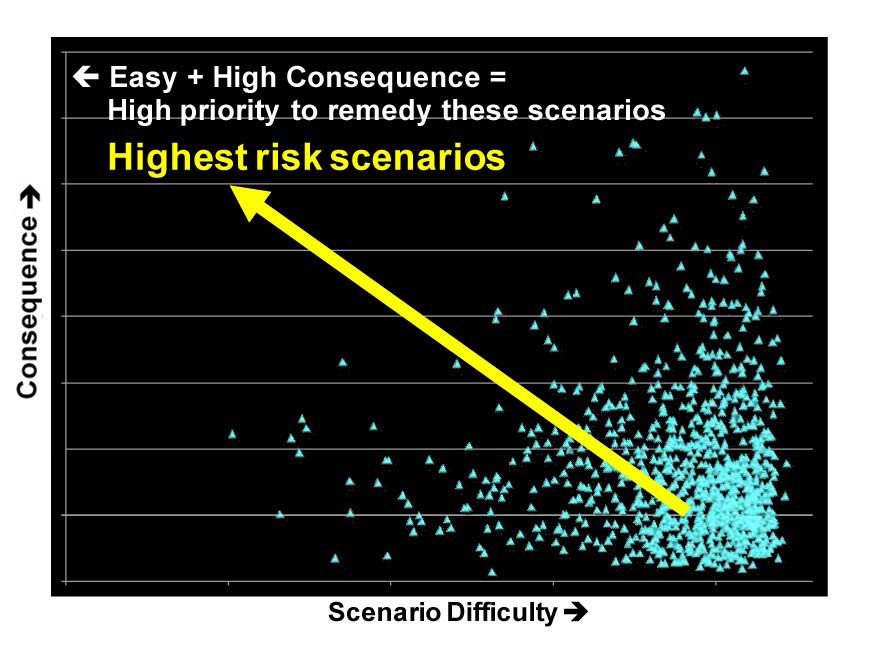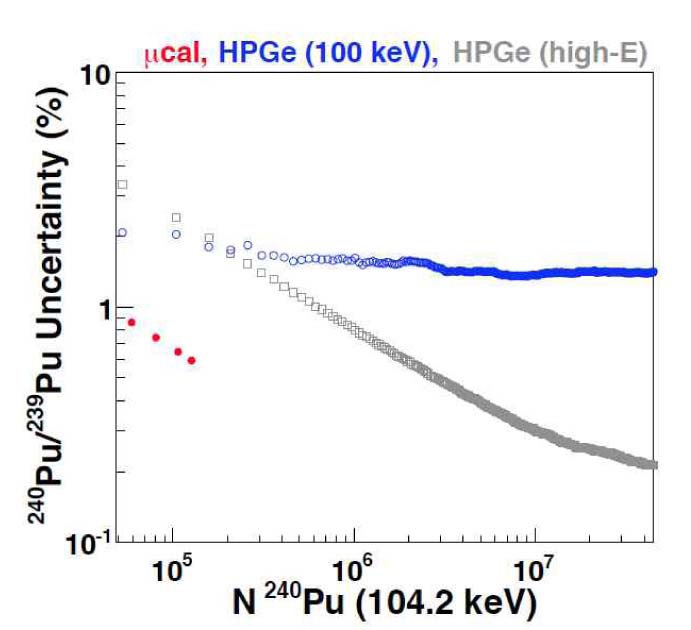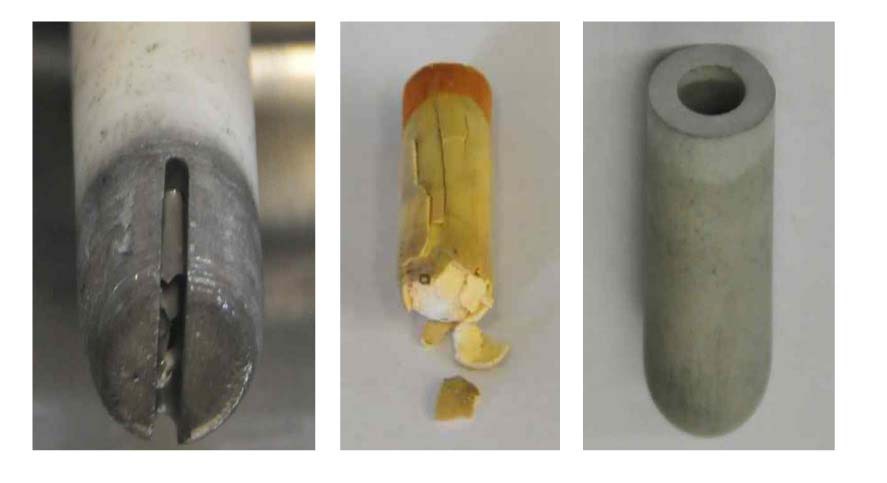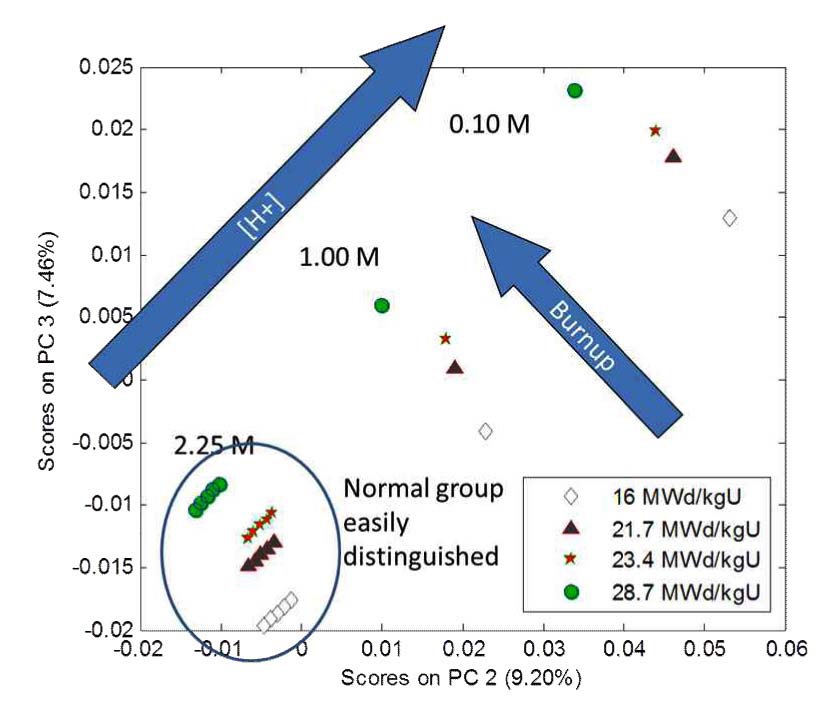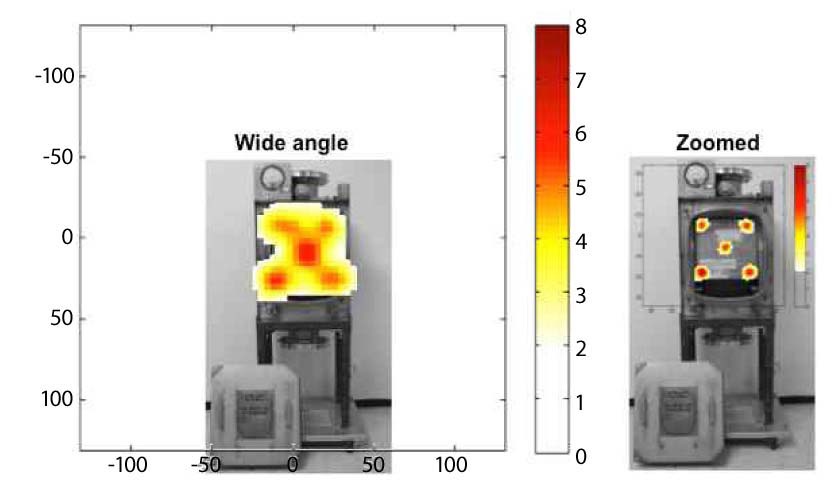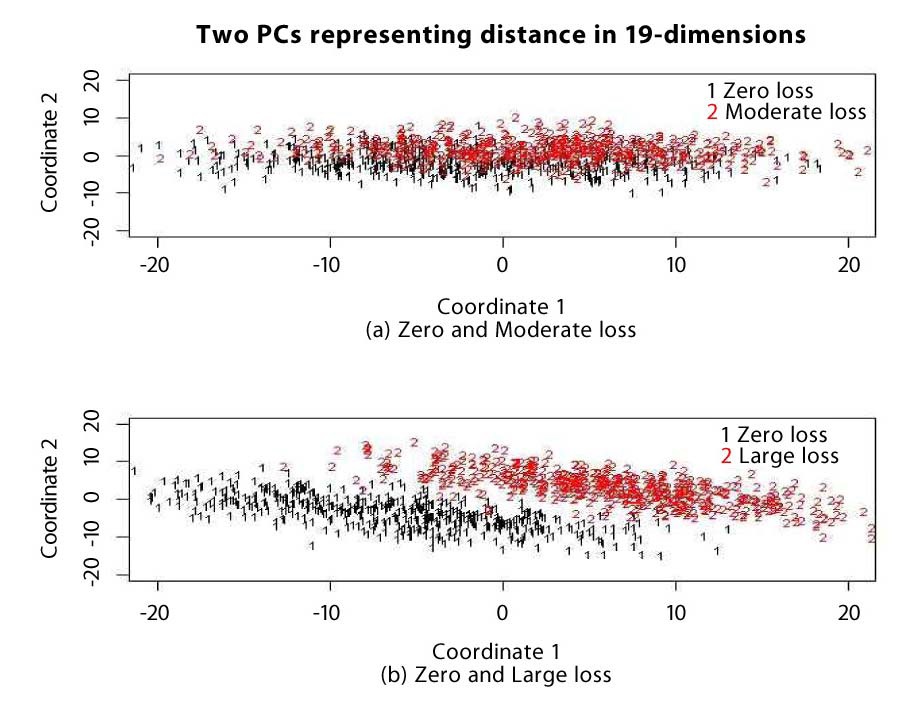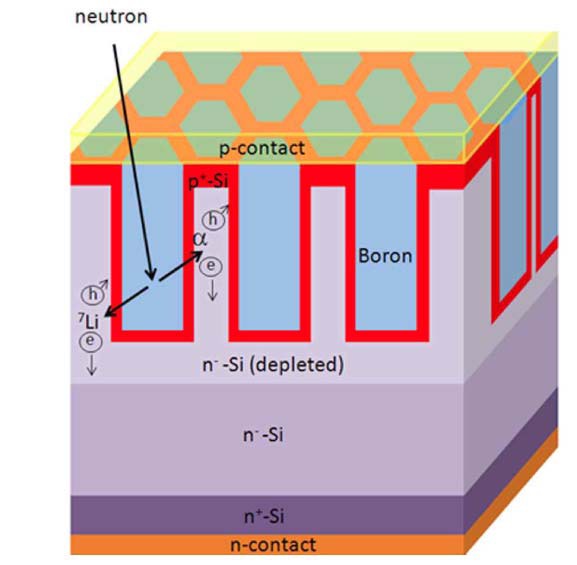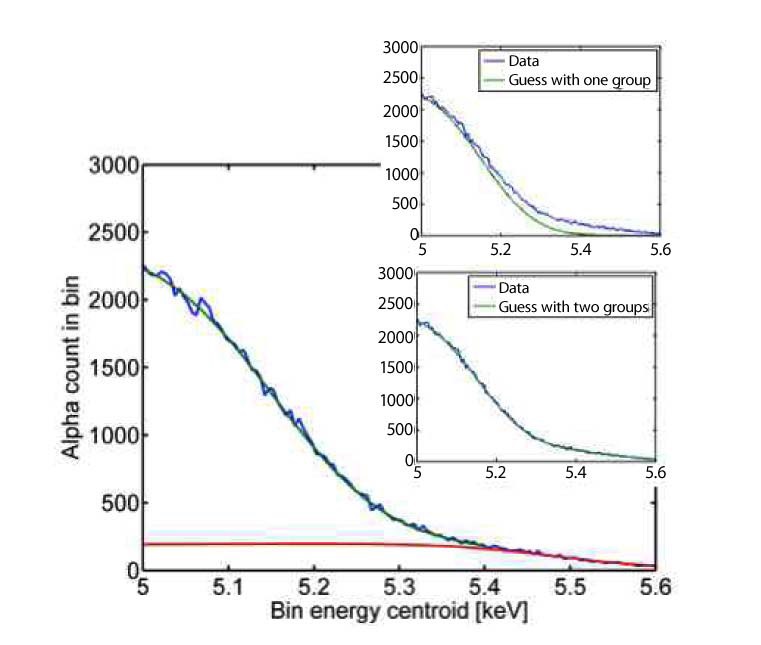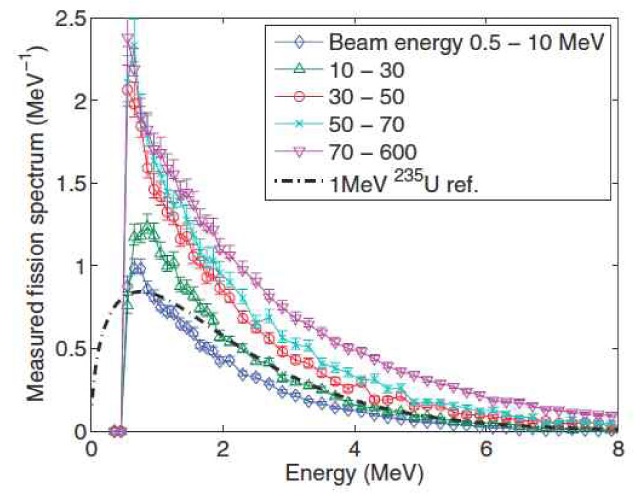



The U.S. Department of Energy’s Fuel Cycle Technologies R&D program under the Office of Nuclear Energy is working to advance technologies to enhance both the existing and future fuel cycles. As such, the program involves R&D in the areas of advanced fuels, separations and waste forms, used nuclear fuel disposition, and systems analysis as well as next generation nuclear materials management in support of a safe, sustainable, environmentally sound, and secure nuclear energy system. The Materials Protection, Accounting and Control Technologies (MPACT) Campaign is chartered to advance nuclear material management practices to support the overall program mission. In the Nuclear Energy Research and Development
In the Nuclear Energy Research and Development Roadmap [1], one of the four major R&D objectives is to
In this paper we present an overview of the MPACT Campaign, highlight recent accomplishments, and describe the current trends of technology development for the future.
A critical component for the successful growth of nuclear power is providing assurance to the international community that nuclear materials and technologies will be used only for peaceful purposes. The foundation for such international assurance, or confidence, is the strength of each State’s national (or domestic) nuclear material control and accounting program working in concert with physical protection. The MPACT Campaign develops innovative technologies that alone advance the state-ofthe- art, and taken as a whole enable next generation nuclear materials management to support the nuclear energy enterprise.
Specific technologies include advancing the state of the art in gamma-ray spectroscopy using super-high resolution cryogenic detectors, neutron-based techniques to measure actinides in used fuel and other fuel cycle materials, sensors to monitor actinides in electrochemical and aqueous reprocessing, and advancing the state-of-the-art in multiplicity analysis and neutron imaging. Additionally, analysis tools and approaches are being developed that address used fuel security for extended storage, large data set pattern recognition for process monitoring, process modeling and simulation for fundamental understanding of MPACT performance assessment, and advancing the state-of-the-art in proliferation and terrorism risk assessment methodologies.
While the focus of R&D conducted by the MPACT Campaign is to support the U.S. domestic civilian nuclear energy enterprise, it does not pursue this goal in isolation of the global nuclear security and nonproliferation regime and thereby builds on and coordinates with other national R&D programs [5-6], in particular the National Nuclear Security Administration’s (NNSA) Office Of Nonproliferation Research and Development (NA-22) and Office of Nonproliferation and International Security (NA-24). In addition, the MPACT Campaign has interfaces with the Nuclear Regulatory Commission and the International Atomic Energy Agency (IAEA).
Current thrusts area for the program include
Security of extended used fuel storage and best practices,
Advanced instrumentation and monitoring technologies for advanced fuel cycles, including electrochemical processing, and
Improvements in proliferation and terrorism risk assessment, including performance modeling.
These efforts are tied together under a framework of Safeguards and Security by Design [7-8], where not only is the system evaluated as a whole but nuclear material management technologies and strategies are incorporated early into the design of new facilities. This approach optimizes not only the efficiency of the overall nuclear material management system but its efficacy as well, as compared to retrofitting or overlaying after the facility design stage. Recent examples where the MPACT campaign is furthering the Safeguards and Security by Design framework is the safeguards by design for small modular reactors under the auspices of the U.S.-Russia Civil Nuclear Energy Working Sub-group and engagement with the international community on facility-specific safeguards by design guidance via the IAEA’s Nuclear Energy technical report series [9].
The R&D portfolio of the MPACT Campaign is conveniently binned into three major areas: Used Fuel Security and Best Practices, Advanced Instrumentation, including Electrochemical Processing, and Analysis and Assessments. In addition, there is a separate Nuclear Energy University Program sponsored by the Office of Nuclear Energy that includes research that supports the overall mission of the MPACT Campaign.
3.1 Used Fuel Security and Best Practices
As used nuclear fuel moves from on-site pool storage to extended dry storage, security considerations become an important part of the approach. This goes beyond simply providing adequate physical security for a storage facility given that the characteristics of the fuel vary with time presenting a time-dependent problem and one must consider the transportation aspect in the overall system as well. A riskbased approach to the problem [10] is under development and being applied to security for used fuel dry storage, where a matrix of scenarios (and their difficulty) versus consequences are developed as a means to optimize protection schemes and understand risks. A conceptual view of the analysis approach is shown in Fig. 1. Expert judgment combined with quantitative analysis is part of the evaluation methodology. For example, the attractiveness [11] of the materials as a function of composition (age, burnup, initial isotopics, etc.) can be quantitatively evaluated and combined with expert assessment of the details of a particular scenario (transportation of used fuel casks, breach of dry storage canister, etc.). Work in this area is coordinated with the Used Fuel Disposition Campaign.
The MPACT Campaign is also planning a workshop, to be hosted by the World Institute for Nuclear Security (WINS), aimed at defining best practices for security of extended dry storage of used nuclear fuel. The workshop is scheduled to be held in the summer of 2013 and will bring together the international community to examine experiences and lessons learned in security for extended dry storage of used nuclear fuel. The outcome of the workshop will be a WINS best practices document, representing input from the broad international community.
3.2 Advanced Instrumentation, Including Electrochemical Processing
A suite of advanced instrumentation projects are being sponsored by the MPACT Campaign to address gaps and enhance capabilities to quantitatively measure or monitor fuel cycle materials and processes.
A key measurement for nuclear materials management is the isotopic determination of actinides in various fuel cycle materials. The current state-of-the-art relies on highresolution germanium gamma-ray detectors for rapid measurements and mass spectrometry when ultimate accuracy is required. While mass spectrometry analysis provides the highest accuracy, it can take days to weeks for results to be available, thereby motivating the use of gamma-ray spectroscopy measurements that typically take 10’s of minutes. One of the limitations of gammaray techniques is instrument resolution and the uncertainty that arise for complex spectra. Microcalorimetry [12] is a technique utilizing cryogenic detectors and superconducting quantum interference devices as pre-amplifiers that has already demonstrated a factor of 10 increase in resolution over high-resolution germanium detectors and promises to greatly extend the capability of gamma-ray spectroscopy. In addition to demonstrating basic capabilities, the engineering development for practical use of the instrument is being pursued, for example a detector array of 256 pixels operating at kHz count rates was recently demonstrated. Fig. 2 shows the increase in performance that the microcalorimeter has achieved for plutonium isotopic measurements compared to a planar and co-axial HPGe detector.
Electrochemical processing presents a special challenge to nuclear materials management given that the harsh conditions (temperature and corrosion) preclude many
standard techniques used for aqueous processing. It is also more difficult to take a sample from electrochemical processing. One promising technique uses a potentiometric sensor based on ion exchange that is capable of directly measuring actinides in molten salts [13]. The sensor being developed consists of β”-alumina that contains precursor species that will ion exchange with the target actinide and thereby giving a potentiometric change relative to a reference electrode. Precursors ions that have been investigated are K+, Sr2+, and Na+. Gd3+ was used as a surrogate for Pu for basic testing. Results of tests of β”-alumina using K, Sr, and Na as the precursor showed that only the Na sensor survived the molten salt environment. Fig. 3 shows the results of testing different sensor compositions, both Sr (completely shattered) and K (exfoliated) precursors exhibited mechanical failure while the Na precursor sensor survived intact.
Further testing to improve the sensor fabrication process is planned in coordination with the Separations and Waste Forms Campaign as well as eventual testing in an operational environment without the use of surrogates. Additional research for electrochemical processing monitoring includes a double bubbler and microfluidic sampling. The double bubbler monitors the molten salt density and level using a dual hydrostatic pressure measurement (two bubblers at different levels). Key challenges will be determining the extent of deviation from non-ideal conditions and their dynamics as related to accuracy. Microfluidic sampling is being investigated as a mechanism to provide samples to external sensors and average out individual sample inhomogeneity.
The Multi-Isotope Process (MIP) monitor [14] is a process monitoring instrument that utilizes changes in gamma-ray spectra, in this case fission products in used fuel reprocessing (using principle components analysis), as an indicator of process chemistry changes with the idea that these could be correlated to nuclear material diversion. The system has been developed and proof of concept testing completed and is currently undergoing
automatic algorithm development and investigation of the impact of reduced detector resolution (for example using LaBr3 versus HPGe). Fig 4 shows the results of changes in [H+] and burnup using simulated data. The nominal acid concentration is 2.25 M (lower left grouping) and is easily distinguished from 1 M and 0.1 M for a burnup range of 16 to 29 MWd/kgU. Benchmark experiments have also been performed with a flow loop setup.
Future mesaurements in a realistic processing environment are planned in conjunction with the Separations and Waste Forms Campaign. One possibility is field testing the MIP monitor at H-Canyon at the Savannah River Site.
Neutron emission is another very important signature of nuclear materials in the fuel cycle, particularly in the case of fission where one can use multiplicity techniques and differences in cross sections for quantitative measurements. The highly penetrating nature of neutron interaction with matter also allows for the utilization of neutron approaches under circumstances where attenuation limits the use of gamma rays, particularly in the case of process holdup measurements where equipment can be very bulky.
Extending multiplicity measurements to the detection of fast neutrons (as opposed to thermalizing them prior to detection as is currently the standard practice) and to possibly include fission gamma rays is an area of research that is ongoing under a collaboration with the University of Michigan [15]. A series of measurements and simulations have been conducted in order to determine design parameters for a fast multiplicity counter and to evaluate the benefits of including fission gamma rays in the analysis (there are about 3 time more gamma rays per fission as neutrons). Detection of both neutrons and gamma rays is accomplished with liquid scintillators and pulse shape discrimination is employed. Benchmarking was done with an 8-detector array.
Larger detector arrays to provide the higher efficiency needed for a real instrument were then simulated and systematic parameter studies conducted. A measurement campaign at the Joint Research Center in Ispra, Italy was recently completed using bulk PuO2 standards to further benchmark the simulations.
Another neutrton-based technique under development is lead slowing down spectrometry [16]. In this case a neutron generator is used to induce fission, utilizing the uniqueness of the fission cross section structure as a function of energy as an isotopic-based assay signature. The ultimate application would be the direct measurement of plutonium in used fuel. Algorithm development in conjunction with the development of more sensitive detectors are ongoing and recent advances in neutron generators show great promise to bring the concept to practical application. A series of measurements is being planned at Rensselaer Polytechnic Institute, a key collaborator in the project.
Neutron imaging [17] is being developed to locate and determine the mass of process holdup for application in situations where gamma rays may undergo excessive attenuation or in locations where it is not practical to field a gamma-ray system. An imaging system employing a coded aperture and pixelated detectors with pulse shape discrimination has been developed and tested with multiple 252Cf sources in a variety of configurations to simulate common process holdup encountered in fuel cycle facilities. Fig. 5 shows results of the imager in a HEPA filter configuration.
Tools for performance assessments, risk assessments, and advanced analyses are being developed to complement and inform the MPACT Campaign’s other research. Activities range from fundamental model development to system-level performance assessments.
Process models are being developed in cooperation with the Separations and Waste Forms Campaign to understand
the basic chemistry of the electrochemical process and apply these results in a mass balance for MAPCT. Fig. 6 shows the results of cathode evolution for fast reactor fuel processing, with the various contributions partitioned out (lines) and experimental data (points) overlaid. As can be seen in Fig. 6, there is evidence that the metals are depositing as a mixture of pure phases rather than a solid solution. This type of modeling can be very helpful in understanding the mass balance of the electrochemical process and optimization of nuclear material management strategies. This is important because in the case of electrochemical processing, there is no accountability tank asfor aqueous processing (which establishes the input to plant inventory).
The inclusion of process monitoring data in addition to traditional nuclear material accounting measurements may be a powerful addition to the overall management and control of fuel cycle materials. Development of a mathematical basis for combing these data is under development [18], involving pattern recognition and the challenge to make quantitative use of more frequent but lower quality data as represented by typical process monitoring. Another challenge is the nature of the data is often fundamentally different. Process monitoring often involves measurement of attributes rather than a direct nuclear material measurements. Fig. 7 presents simulation results for two diversion scenarios, one a moderate loss (1% of inventory) and the other large (3% of inventory) over a 30-day period, where residuals from 19 data streams are combined.
As can be seen from the plot, a larger diversion is easier to detect, but both show as statistically significantly. Trending data as it is available and taking advantage of cross correlations within the dimensions may provide more timely detection of diversion or abnormal plant operations.
At the facility level, a performance model [19] is under development for electrochemical processing that incorporates both nuclear material accountancy and physical protection. The model accounts for unit operations and has
the capability to take into account measurement uncertainty. This allows for process monitoring and nuclear material accounting measurements to be included and assessed together in terms of an overall detection probability. The addition of physical security allows for diversion path analysis including detection probabilities derived from features of the security system. This model can incorporate input from the mass balance work and process monitoring work previously described, as well as sensor information being developed under the Separations and Waste Forms Campaign. It can also be used as a tool to evaluate critical measurement points or physical protection features for purposes of resource optimization within the MPACT Campaign.
Understanding proliferation and terrorism risk is a difficult undertaking as it involves both technical and socio-political aspects. A new project in the MPACT Campaign is working to bring a new level of analysis to this problem. The proliferation and terrorism risk assessment project is a multidisciplinary study incorporating areas such game theory, operations research, expert elicitation, and uncertainty analysis to build on the tools that currently exist to evaluate fuel cycles and facilities. A current study by the National Academies [20] will inform the project in the nonproliferation risk assessment area (this study was one of the recommendations in the initial development roadmap for the project). The project includes several university collaborators and has gathered input from the broader community through focused workshops. Early deliverables include performing a set of prototype assessments for once-through, modified-open, and closed fuel cycle options. Coordination with and providing input to Fuel Cycle Options Campaign is an important aspect of the work activity.
3.4 University Research Program
In addition to the research being conducted directly by the MPACT Campaign, the Office of Nuclear Energy has a Nuclear Energy Research Program (NEUP) that funds a variety of projects, some of which have direct relevance to enhancing nuclear material management and controls. These projects are independent of the MPACT Campaign. Current projects relevant to the MPACT Campaign include developing new sensors, active interrogation techniques for nuclear material measurement, and measurement of basic nuclear data.
Sensor projects include the development of a selfpowered solid-state neutron detector [21] and a SiC Schottky diode for alpha detection [22]. The self-powered neutron detector utilizes a three-dimensional honeycomb-like silicon micro-structure that incorporates 10B as the detection mechanism. Devices ranging from 2 x 2 mm2 to 5 x 5 mm2 were fabricated and tested, exhibiting a thermal neutron detection efficiency of 4.5% and gamma-to-neutron sensitivity of 1.1 x 10-5 for a neutron threshold of 500 keV. Monte Carlo simulations indicate an efficiency of 45% is possible, lending to potential application in bulk nuclear material measurements. Fig. 8 shows a schematic of the detector composition.
The SiC Schottky detector is being developed as a potential sensor for direct monitoring of actinides in molten salts. 4H-SiC wafers were fabricated and tested up to 500 C using a 241Am source. Temperature effects were observed (increased full-width-half-maximum and centroid shift), but the detector survived and continued to operate. Variations in the magnitude of these effects was also observed, thought
to be dependent on the quality of the crystal structure of the individual wafers. Further investigation into this effect and the role of point defects and their impact on electron mobility is planned. Fig. 9 shows a simulation of the detector response, using current best-performance detector parameters, for electrochemical processing of EBR-II fuel. Two groups (239Pu + 240Pu) and (241Pu + 241Am) describe the data well.
Another NEUP-funded project is investigating using delayed gamma-ray detection following photofission as a means to quantify actinides in used fuel [23]. The technique uses a linac to induce fission in the sample, followed by a measurement of the delayed gamma-ray activity from target fission products. This cycle is repeated until sufficient counting statistics are obtained. Tests have been undertaken with depleted and high-enriched uranium, demonstrating the basic concept and operational mode. Future work will address the systematics of signature differentiation.
In the area of basic nuclear data, neutron-induced fission spectra of 235U are being measured to complement the existing data which are not well know in the energy range below 1 MeV and above 5 MeV [24]. A double timeof-flight approach was employed using liquid scintillation detectors and pulse shape discrimination over a wide range of incident neutron energies. Fig. 10 show fission spectra acquired for incident neutron energies up to 600 MeV.
The MPACT Campaign is investigating a range of technologies and analysis/assessments tools in support of next generation nuclear materials management. Current areas of concentration are used fuel security and best practices, advanced instrumentation for advanced fuel cycles
including electrochemical processing, and analysis and assessment tools. Projects are integrated with each other where appropriate and with other Fuel Cycle Technologies Campaigns. In particular, the MPACT coordinates with the Used Fuel Disposition and Separations and Waste Forms Campaign to maintain awareness of program priorities and relevancy. Specific research projects are also coordinated with other U.S. R&D programs, in particular NNSA’s Office of Nonproliferation Research and Development (NA-22) and Office of Nonproliferation and International Security (NA-24). In addition to projects directly supported by the MPACT Campaign, there are relevant projects supported under the Nuclear Energy University Program. These projects not only contribute to the advancement of technologies related to the MPACT mission, but also provide the basis of human resource development for the next generation of professionals engaged in nuclear materials management.
It is anticipated that the MPACT Campaign will maintain a balanced portfolio of advanced instrumentation projects and analysis/assessments tool development, focused on the overall Fuel Cycle Technologies R&D program priorities. As the U.S. nuclear energy enterprise evolves, the MPACT Campaign will be well positioned to provide meaningful advancements in the nuclear material management and control to help ensure the peaceful use of nuclear energy.
